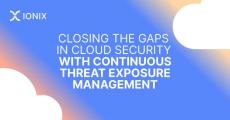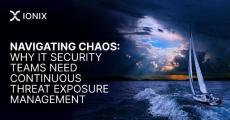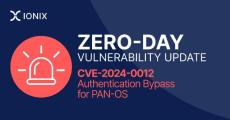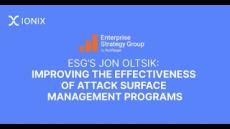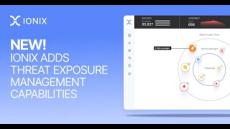|
By Amit Sheps
In Continuous Threat Exposure Management (CTEM), risk assessment acts as the central thread that ties all components together, turning raw threat intelligence, vulnerability detection, and external attack surface monitoring into actionable mitigation strategies.
|
By Gilad Friedman
The External Attack Surface Management (EASM) domain is rapidly growing in importance for businesses across the globe. Organizations must strive to understand the true scope of their attack surface as seen through the eyes of a potential hacker. This is a foundational step in any risk program that CISOs are implementing.
|
By Amit Sheps
In today’s rapidly evolving threat landscape, traditional reactive security approaches are no longer sufficient. This reality led Gartner to introduce Continuous Threat Exposure Management (CTEM) to shift organizations’ mindset from reactive firefighting to proactive threat management through five critical phases: This structured approach revolutionizes how organizations secure their cloud environments. But to succeed, CTEM demands specialized tools designed for modern cloud complexities.
|
By Fara Hain
CVE-2024-52875 is an HTTP Response Splitting vulnerability in Kerio Control. This flaw allows an attacker to inject malicious input into HTTP response headers by introducing carriage return (\r) and line feed (\n) characters. Such manipulation can cause the server to send multiple HTTP responses instead of one, leading to various attacks.
|
By Nethanel Gelernter
The NuPoint Unified Messaging (NPM) module in Mitel MiCollab versions up to 9.8 SP1 FP2 (9.8.1.201) is vulnerable to a path traversal attack caused by insufficient input validation. This vulnerability could be exploited by an unauthenticated attacker to gain unauthorized access to sensitive files, potentially allowing them to read, alter, or delete user data and critical system settings. The Mitel MiCollab Arbitrary File Read Vulnerability combines CVE-2024-41713 with another yet-to-be-assigned issue.
|
By Marc Gaffan
The field of IT security has never been more complex or demanding. As organizations race to adopt digital technologies and modernize their infrastructures, they inadvertently create chaos that overwhelms security teams. This chaos is driven by three critical vectors: the rapid expansion of the attack surface, continual changes to existing assets, and the relentless emergence of new security threats.
|
By Amit Sheps
Attack surface analysis is the process of mapping out an organization’s attack surfaces. These consist of the set of attack vectors that an attacker could use to target an organization. Organizations have both external and internal attack surfaces. An external attack surface includes all potential attack vectors that could be used to gain initial access to an organization’s environment from the public Internet.
|
By Amit Sheps
An attack surface is the sum total of all the various ways that a cyber threat actor could attack an organization. This includes everything from software vulnerabilities, like SQL injection, to lost and stolen devices to social engineering attacks against the organization’s employees or third-party partners. An organization’s overall attack surface can further be divided into its external and internal attack surfaces.
|
By Nethanel Gelernter
An authentication bypass in Palo Alto Networks PAN-OS software enables an unauthenticated attacker with network access to the management web interface to gain PAN-OS administrator privileges and perform administrative actions, tamper with the configuration, or exploit other authenticated privilege escalation vulnerabilities like CVE-2024-9474.
|
By Amit Sheps
IONIX today announced the release of our Cloud Exposure Validator, a tool designed to reduce cloud vulnerability management noise shifting focus to findings that represent the biggest threats. The Validator addresses the growing challenges organizations face in managing cloud security risks effectively. This blog post explains how.
|
By IONIX
How to Expose Critical Threats and Proactively Prevent Breaches In today's cyber landscape, identifying and mitigating threats from an attacker's perspective is not just an option – it's a necessity. Watch this insightful fireside chat with Forrester Senior Analyst Erik Nost and IONIX CEO Marc Gaffan, as they dive into the world of Threat Exposure Management (TEM) and its pivotal role in safeguarding your business.
|
By IONIX
Growing digital connectivity has led to the rise of digital supply-chain attacks. This session will explain, demonstrate, and provide statistics about the complexity of the problem and about attacks that arose due to dependencies on external infrastructures. While there is no simple solution to the problem, we will present a strategy to reduce exposure and create processes to avoid such vulnerabilities.
|
By IONIX
Senior principal analyst and ESG fellow John Oltsik discusses Improving the Effectiveness of Attack Surface Management Programs.
|
By IONIX
In a world where organizations cannot fix everything, security and IT teams need a practical way to identify and act on critical exposures. IONIX Threat Exposure Radar exposes critical risks so you can effectively reduce risk and improve your security posture.
|
By IONIX
Gain control of your external attack surface and digital supply chain with Cyberpion and Azure Sentinel Nethanel Gelernter, Cyberpion
|
By IONIX
The Apache Log4j vulnerability will likely continue to create challenges for security teams for months to come, and we want you to be prepared.
|
By IONIX
We are kicking off December and Talking Cloud with the Co-Founder and CBO at Cyberpion. If you're like me, you're wondering how to pronounce the name of the company, let alone exactly what they do in the cloud. You'll not only learn how to properly pronounce the name of the company but also learn where the name came from and the unique solution they have built to address the hyper-connected world we all live in today. Hear my fun and informative discussion with Ran Nahamis.
|
By IONIX
Cyberpion's Ecosystem Security platform enables security teams to identify and neutralize the rising threats stemming from vulnerabilities within the online assets throughout an enterprise's far-reaching, hyperconnected ecosystem.
|
By IONIX
Download this complimentary report and learn why Omdia sees Cyberpion as well placed to carve out a share of the expanding EASM market, given the breadth of its current offering and its plans for where it needs to take its technology next.
|
By IONIX
Full external attack surface visibility is just the first step to safeguarding your organization. Cyberpion goes beyond visibility to combine an attack surface vulnerability assessment for each connected asset, whether your own (first party) or from a third party. Moreover, the platform actively responds to major vulnerabilities, like dangling DNS records, by taking temporary ownership of the relevant IP address or subdomain to prevent it from falling into the wrong hands.
|
By IONIX
The move to the cloud has exponentially increased this phenomenon: The IT team is no longer required for provisioning storage, running an application, or configuring a server. Along with the growth in Shadow IT, the security risk has grown as well. Potential backdoors have been created and internal data has moved online, violating compliance requirements and compromising the organization's security posture.
|
By IONIX
Cybersecurity teams need to develop and maintain a set of practices around their online attack surface. These practices must include attack surface visibility and mapping of third-party connections as well as constant assessment of the risks of these connections. Controls must include the ability to detect and alert on risky or broken connections, coupled with automated remediation when feasible.
- December 2024 (6)
- November 2024 (10)
- October 2024 (3)
- September 2024 (6)
- August 2024 (3)
- July 2024 (5)
- June 2024 (5)
- May 2024 (6)
- April 2024 (8)
- March 2024 (5)
- February 2024 (2)
- January 2024 (5)
- December 2023 (2)
- November 2023 (4)
- October 2023 (2)
- September 2023 (1)
- August 2023 (1)
- July 2023 (3)
- June 2023 (4)
- May 2023 (2)
- April 2023 (4)
- March 2023 (5)
- February 2023 (1)
- January 2023 (4)
- December 2022 (1)
- November 2022 (7)
- October 2022 (4)
- April 2022 (3)
- March 2022 (1)
- January 2022 (1)
- December 2021 (2)
- November 2021 (1)
- December 2020 (1)
IONIX is the only EASM solution that discovers the full extent of your online risk exposure and actively protects your hyper-connected external attack surface.
With growing reliance on SaaS, Cloud, APIs, and 3rd party services, hyper-connectivity presents the fastest-growing and most serious risk to enterprises like yours. Mostly invisible, unmanaged, and everchanging, exposed hyper-connected assets, whether yours or your business partners, are easy entry points for attackers to exploit.
Operate Confidently Online with IONIX:
- Attack Surface Discovery: Identify the internet-facing assets you own and their extended connections with unmatched coverage and precision.
- Risk Assessment: Evaluate each discovered asset, its connectivity, and related kill chains for exploitable vulnerabilities and risks.
- Comprehensive Reporting: Identify assets and connections that are no longer in use so you reduce your attack surface and exposure to risk.
- Active Protection: Support your security team with Active Protection, so you prevent exploitation of your most vulnerable assets.
- Risk Prioritization: Accelerate mitigation with a prioritized list of action items to help your security team effectively focus their efforts.
- Workflow Integration: Integrate your current security tools including Microsoft Azure Sentinel, ServiceNow, Atlassian Jira, Splunk, and Cortex XSOAR.
Discover and Protect Your Attack Surface.




